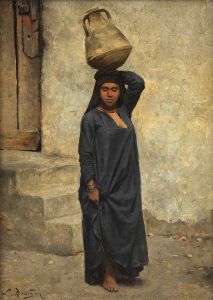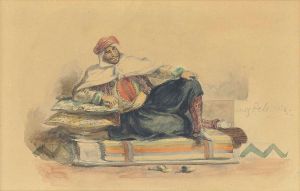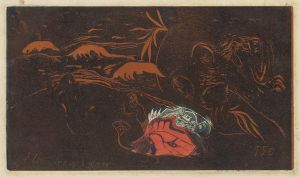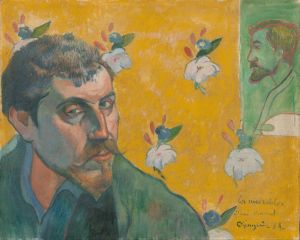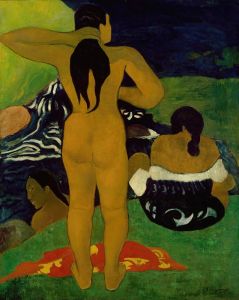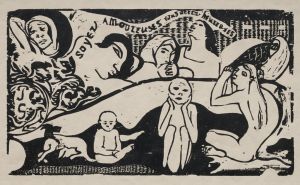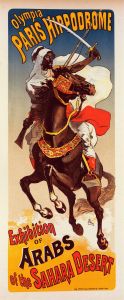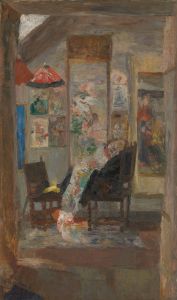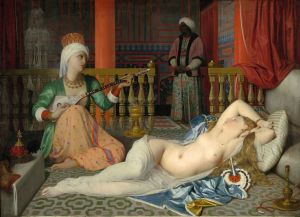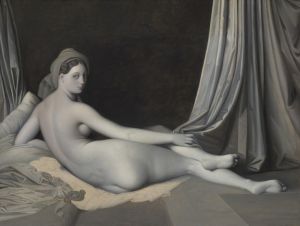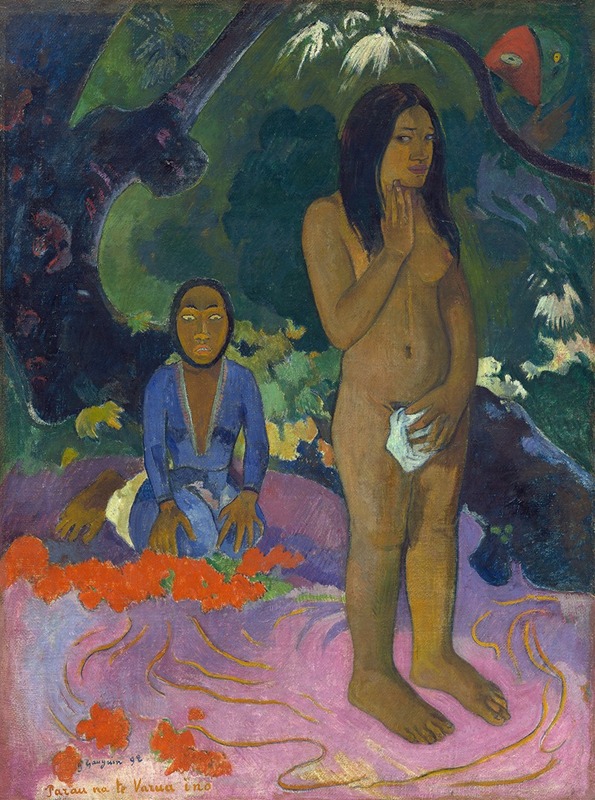
Parau na te Varua ino
A hand-painted replica of Paul Gauguin’s masterpiece Parau na te Varua ino, meticulously crafted by professional artists to capture the true essence of the original. Each piece is created with museum-quality canvas and rare mineral pigments, carefully painted by experienced artists with delicate brushstrokes and rich, layered colors to perfectly recreate the texture of the original artwork. Unlike machine-printed reproductions, this hand-painted version brings the painting to life, infused with the artist’s emotions and skill in every stroke. Whether for personal collection or home decoration, it instantly elevates the artistic atmosphere of any space.
"Parau na te Varua ino" (translated as "Words of the Devil" or "Words of the Evil Spirit") is an oil painting created by the French post-impressionist artist Paul Gauguin in 1892. This artwork is one of the many pieces Gauguin produced during his first stay in Tahiti, a period that significantly influenced his artistic style and subject matter.
Gauguin traveled to Tahiti in 1891, seeking to escape European civilization and immerse himself in what he perceived as a more "primitive" and "pure" culture. His time in Tahiti profoundly impacted his work, leading him to develop a distinctive style characterized by bold colors, strong outlines, and symbolic content.
"Parau na te Varua ino" depicts a Tahitian woman standing in a lush, tropical landscape. She is shown in a frontal pose, with her hands clasped in front of her, and her expression is one of contemplation or concern. Behind her, another figure, often interpreted as a spirit or demon, lurks in the background. This figure is rendered in darker tones, contrasting with the vibrant colors of the woman and the surrounding environment.
The painting's title, "Parau na te Varua ino," adds a layer of mystery and intrigue to the work. The phrase is in Tahitian and can be translated to "Words of the Devil" or "Words of the Evil Spirit." This title suggests a narrative or symbolic dimension to the painting, hinting at themes of spirituality, fear, and the supernatural. Gauguin was known for his interest in the spiritual and mystical aspects of the cultures he encountered, and this painting reflects that fascination.
The composition of "Parau na te Varua ino" is notable for its use of color and form. Gauguin employs a palette of rich, saturated colors, including deep blues, greens, and reds, which create a sense of depth and vibrancy. The figures are outlined in bold, black lines, a technique that Gauguin often used to emphasize the shapes and contours of his subjects. This approach gives the painting a sense of solidity and presence, while also lending it a somewhat stylized and abstract quality.
"Parau na te Varua ino" is housed in the National Gallery of Art in Washington, D.C. It is considered an important example of Gauguin's work from his Tahitian period and is often cited as a key piece in understanding his artistic development and the themes that preoccupied him during this time.
Gauguin's Tahitian paintings, including "Parau na te Varua ino," have been the subject of much scholarly analysis and interpretation. They are seen as a reflection of his complex relationship with the cultures he encountered and his quest for a deeper understanding of human existence and spirituality. Despite the controversies surrounding his life and work, Gauguin remains a pivotal figure in the history of modern art, and "Parau na te Varua ino" is a testament to his enduring influence and vision.





